
Important Implications for U.S. Foreign Policy
Calling things by the wrong name adds to the affliction of the world.[1]
– Albert Camus
There is the American official story regarding Srebrenica. In addition to that story, any descriptions, explanations and/or fiction have not only been allowed but encouraged. Anything but the truth!
From sinister plots by competing secret services to the lizard-people’s human sacrifices, heartbreaking fairy tales[2] and epic religious clashes, betrayals by greedy officials and racist mockery of the Balkan/Slavic/Muslim/Orthodox demonic nature(s),[3] all narratives were encouraged to keep the genocide fever burning, and casting the West’s enlightenment upon the scared world in need of salvation from the forces of darkness. Also, to justify the funds needed for NATO and the maintenance of the American global political and financial edifice.
This rule was especially harshly applied to the Serbs, the official evil-doers in the matter, and it was most actively put into practice through the “free” YouTube channels[4] that kept the Serbs busy with “exclusive discoveries” of “what really happened in Srebrenica”—the propaganda method successful with that sliver of the Serbian population smart enough not to accept the incredible official story but not brave enough[5] to tell the truth.
The worst offenders in the sordid matter of the Srebrenica deception have been the so-called Serbian national elite who have, for almost three decades now, based all official Serbian state and nationalistic strategies and tactics on the most preposterous and damaging claims that there was no genocide in Srebrenica but that there happened a terrible war crime and a bloody massacre.
Such political and intellectual/ethical positions by the cowardly and treasonous Serbian “elite” provided them with the most comfortable position in the hitherto America-dominated Balkan setup. They can simultaneously pose as Belgradian patriots, by not accepting the charge of genocide and yet, to satisfy their Western masters, embrace the guilt of war criminals and shame of bloodthirsty maniacal killers of innocents. It offers them the domestically necessary public political status of fighters for the “national interest” and the private comfort of ethical purity and righteousness.
Concurrently, they destroy the spirit and the living force of the Serbian people and succeed in disarming and shaming not only the allies of the Serbs but anyone seeking the truth and justice regarding the Srebrenica events. Today, almost 30 years after the so-called “American Diplomatic Bulldozer’s”[6] greatest foreign policy achievement,[7] also known as “the end of the war” in Bosnia and Herzegovina (BH), it is of utmost importance to bring forth as many facts as possible so that the truth may be discovered and presented to the world.
The greatest problem with the almost 80-year-old[8] genocide definition are its very words, which basically allow the “international community” to declare any of its opponents (read: enemies) as guilty of genocide while clearing the in vivo genocidal murderers of any suspicion, even praising them as humanitarian interventionists and/or fighters against terrorism.
Yet, we may operate only with what we have as positive international law, which provides for a clear and unequivocal declaration that genocide did happen in Srebrenica.
The fight must be for designating the true victims and the true perpetrators of that genocide. The “international community” has designated the BH Serbs as the criminals and the BH Muslims as the victims. The evidence proves just the opposite!
It is of utmost importance, for the sake of truth and justice and, in the case of Serbian national interest and individual Serbian psyche, to correct the lies and to make it known, and legally official, that a planned and intended genocide was committed against the Serbian Christian Orthodox population of Srebrenica (and BH), and that there was no genocide against the Muslims there (although, as Americans love to say, in the fog of war “collateral damage” happened on all sides).
Even more important is the fact that no state-planned/executed war crimes or massacres were committed against Muslim civilians in Srebrenica but that the military deaths happened during a clear and deliberate armed thrust of illegal and terrorist BH Muslim forces[9] who wanted to avoid capture by a legitimate and internationally recognized armed forces of the Serbian Republic of Bosnia and Herzegovina, who were ending their violation of Srebrenica’s UN status of a “safe area,”[10] and who were to transfer them to appropriate civilian authorities in order to be tried and punished for the crimes they committed from 1992 to 1995.
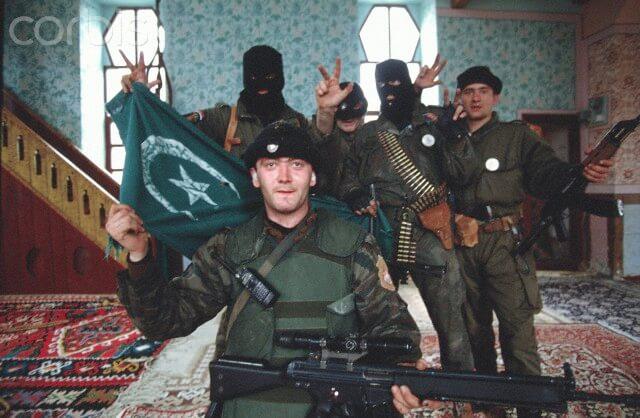
There were three major problems with Srebrenica as a “safe area.” The UN and International Humanitarian Law (Rule 36) recognize Demilitarized Zones[11] and provide clear legal language regarding violations of such territories. It seems that a deliberate omission by the “international community” occurred when a “safe area,” and not a “demilitarized zone,” was created in Srebrenica, making it possible for the West to demand that BH Serbs follow all the “demilitarized zone” rules but allowing the BH Muslims within the “safe area” to do as they please.
This created the second problem—the incompetence and incapacity of the UN Protection Force (UNPROFOR), first Canadian and then Dutch, to execute Resolution 819, not only due to their inadequate numbers and equipment but even more by the BH Muslim military clear understanding that the “international community” allows[12] them to conduct genocidal raids against Serbians[13] in Srebrenica and in the villages around it.
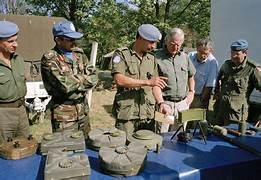
The third problem arose from the lack of an agent willing and able to enforce the UN “safe area” rules and the “Agreement about the demilitarization of Srebrenica and Žepa, signed on May 8, 1993, between General Ratko Mladić and General Sefer Halilović in the presence of General Phillipe Morillon.”[14]
By July 1995 it was obvious that the BH Muslim forces in Srebrenica not only systematically violated the rules,[15] killing BH Serbian soldiers and civilians (ritual executions on Serbian and Muslim holy days), terrorizing their own Muslim brethren,[16] trafficking in women[17] and arms, etc., but it became known through Hakija Miholjić,[18] the Muslim political party of the Srebrenica president, that the Muslim BH President, Alija Izetbegović,[19] received a direct recommendation from U.S. President Bill Clinton that 5,000 Muslims need to be massacred so that the U.S. may intervene militarily in BH and bomb the Serbs.
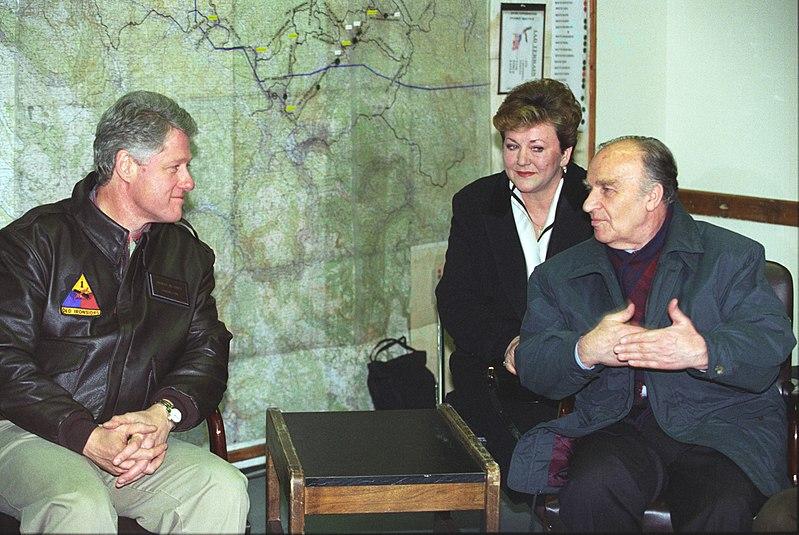
Ibran Mustafić, one of the founders of the BH Muslim political party, testified about the same event in his interview to “Free Bosnia,”[20] emphasizing the fact that the military leaders of Srebrenica were evacuated together with old men and children before the events there. In addition to this, it had been known to the leadership of the Serbian Republic of Bosnia and Herzegovina (and for that matter to the rest of the world) that “the American Plan” was to ensure “active belligerency” so that the “international community” could achieve “a final settling of accounts with Serbian aggression in the Balkans.”
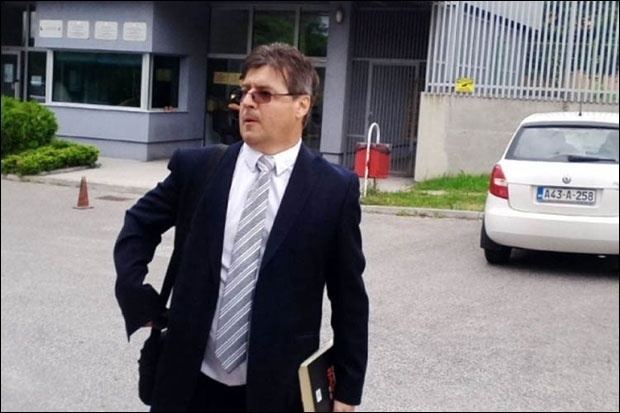
Two American officials, a former U.S. Department of the State employee and a military analyst, George Kenney, and Michael Dugan, retired Chief of Staff of the U.S. Air Force, disclosed “The Plan” in the 1992 New York Times article “Operation Balkan Storm: Here’s the Plan.” Thus, the third problem—elimination of the “active belligerency” agent from Srebrenica—had to be dealt with by the Serb authorities. Thus, it was necessary to put an end to the genocide against the Serbian civilians around Srebrenica.
Legally, one commits genocide if one has the “intent[ion] to destroy, in whole or in part, a national, ethnical, racial or religious group” by “killing members of the group; causing serious bodily or mental harm to members of the group; deliberately inflicting on the group conditions of life calculated to bring about its physical destruction in whole or in part; imposing measures intended to prevent births within the group; forcibly transferring children of the group to another group.” Article III of the Convention declares the following acts to be punishable: “Genocide; Conspiracy to commit genocide; Direct and public incitement to commit genocide; Attempt to commit genocide; Complicity in genocide.”
The 1992-1995 genocide in Srebrenica was not the only genocide that had happened there. Allowing the so-typically Western liberty of retroactively applying the 1948 definition, there had happened quite a few genocides in/around Srebrenica:
The first was during the Ottoman conquest (in the 15th century) of the Serbian Orthodox Christian Despotate of Serbia, when the Srebrenica silver mines of the former Serbian Empire were secured for the Islamic Ottoman invaders of the Serbian lands.
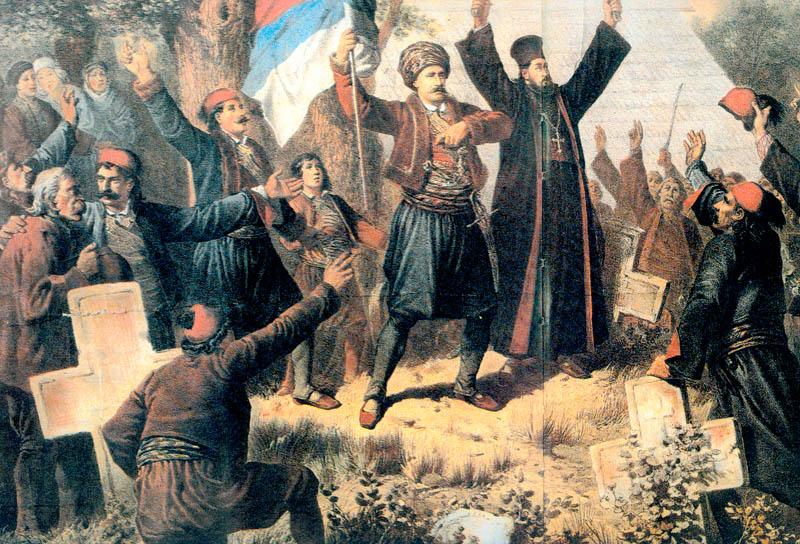
Another genocide of the Serbs (according to the current definition—Article II a & b), was conducted in 1820, by the Vesier of the High Porte, a Kurdish Islamic fundamentalist, Ali Jelaludin Pasha, who exterminated the former Serbian Orthodox Christian nobility—turned Islamic converts—of Bosnia and Herzegovina (obviously including Srebrenica, where the leading Muslim lord, Hajji Sali-bey, was a great friend of the Prince of Serbia and the highest Orthodox clergy there) because of the fears by the Sultan in Istanbul that they were not adequately loyal to him.
Incredible exterminations, as state policy, of the Serbian Orthodox Christian population, then under Austro-Hungarian occupation, happened from 1914 to 1918, but the demographic-changing exterminations of Serbs happened from 1941 to 1945, when the Independent State of Croatia executed its genocidal state policies on its territory.
From 1991 to 1999 exterminations of the Serbian population of Yugoslavia were conducted in the open, often with foreign media covering them, with both the West’s overt and covert support, and they are continuing to this day, just in forms different from military.
In the end, one must point out one of the most repulsive products of the Srebrenica issue: the “Mothers of Srebrenica” industry—one of the few profit-making activities of the almost non-existent economy of the international community’s protectorate of Bosnia and Herzegovina.
The greed and the chutzpah of these women are incomparable in world history. It is not the grief for their lost sons (or other family members) that motivates them. They glorify their deaths and proudly talk publicly about the exterminations of the infidel Serbs by their kin. They have monetized their histories to the extent that they are among the Bosnian 1%. It is hatred that motivates them. The hatred that inspired these mothers is the same one that so recently (September 8, 2024) inspired the Yugoslavia-born (BH) Sanija Ameti,[21] a 32-year-old leader of the Europhile Swiss Liberal Greens, to publish proudly her shots at the icon of the Mother of God and Jesus Christ in Zurich.
Maybe she was animated by the YouTube interview with one of these Srebrenica Mothers, Fadila Mujić.[22] Ms. Mujić proudly testified about mass participation of Muslim women and children in the genocide against Srebrenica Serbs, with a specific joy in recounting[23] the murders and pillage in the Serbian Orthodox Christian village of Kravice on Christmas, January 7, 1993 (minute 18:25 of the video). Maybe Ms. Ameti was one of more than 132,000 viewers of that video, of whom over a thousand left comments praising Fadila’s genocidal sprees.
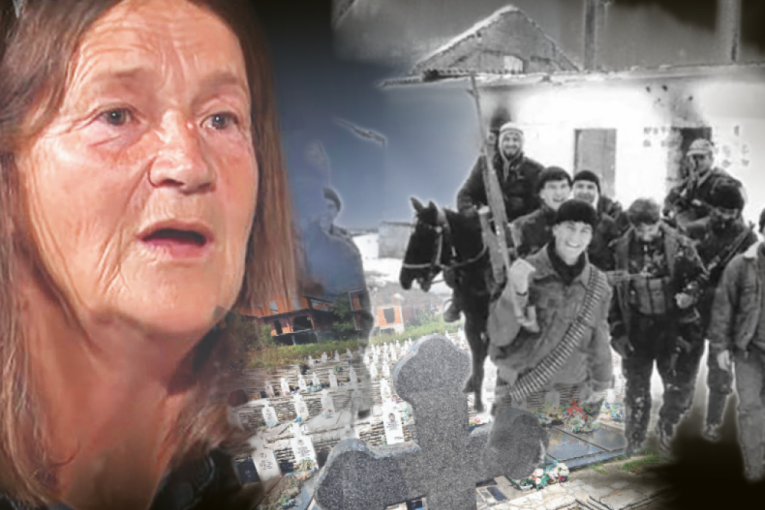
The 1995 Dayton Agreement declared the end of the war but it can flair up at any moment since that peace is artificial, and a fake state was set up there by the U.S., a state with no sovereignty. On December 21, 1995, the UN International Police Task Force (IPTF) and a UN civilian office in BH were established, commonly known as the UN Mission in Bosnia and Herzegovina (UNMIBH). It was terminated on December 31, 2002. It invented a new supra-sovereign office—The High Representative for Bosnia and Herzegovina (on December 14, 1995)—by the Peace Implementation Council, consisting of about 90 U.S.-selected UN states. Yet, it was not a UN mission but an operation by the dominant Western powers, which needs the UN to provide legality and legitimacy to their own interests in the Balkans.
SFOR (Stabilization Force), a NATO-led multinational peacekeeping force in BH, was established by the UN SC Res. 1088, on December 12, 1996, and lasted until December 2, 2004. It was replaced by the EU EUFOR Althea mission, which is still in BH, as is the High Representative for Bosnia and Herzegovina, who still officially possesses his supra-sovereign powers and is the final authority in that supposedly sovereign nation. The West’s hubris has worked, as hubris always does, against itself, so today there is a private person in BH posing as High Representative, but he lacks the official legal authority, which only the UN Security Council can provide. Russia and China declined to do so, thus leaving that “state” leaderless for the foreseeable future, probably soon becoming the cause of the new war in the Balkans.
What once was a beacon to the world, a glorious shining city upon a hill, a proud edifice of noble beams of legal and humane fortitude, the United States and its puppets, have crumbled before our very eyes in just a few years.
Srebrenica might be the clearest exhibit why the tears of its victims have extinguished the once proud flames of the corrupt and suicidal empire. Many a naïve soul still sees The Light, but it is only foxfire emitted from the decaying timber of a ruin infested by the poisonous parasitic fungi feasting on the corpse of the Old World Order.

This is the quote the organization Medecins Sans Frontières (Doctors Without Borders) chose for the banner at its Practical Guide to Humanitarian Law [https://guide-humanitarian-law.org/content/index/], although they are infamous for refusing to help Serbians and Russians, and for “calling things by the wrong name [thus adding] to the affliction of the world” during official testimonies in order to support the West’s political agendas. See, for example, https://www.doctorswithoutborders.org/latest/testimony-presented-msf-during-french-parliamentary-hearing-srebrenica-tragedy ↑
Sarajevo Romeo and Juliet, for example, https://www.youtube.com/watch?v=jnQ1lTAVjhw ↑
https://www.latimes.com/archives/la-xpm-1993-03-18-ca-12374-story.html ↑
A wide range of extraordinary personalities appeared, from the Belgrade-based brother of the global neo-liberal icon Marina Abramovic to the self-proclaimed “former” member of the French military intelligence. ↑
In Bosnia there are laws that ensure punishment for anyone who is a “genocide denier.” In Serbia no such law exists and one is encouraged by the government to deny it, but doing so ensures one’s pariah status (unless one is part of the government or belongs to the West-approved “opposition” parties) as an enemy of democracy, the EU, and Serbia’s joyous future as part of the “Western values world.” ↑
Richard Holbrook, called Le Bulldozer by the French; see https://balkaninsight.com/2021/09/06/the-soldier-in-the-photograph-in-memory-of-richard-holbrooke/ ↑
“Bombs for Peace.” https://www.pbs.org/wgbh/pages/frontline/shows/kosovo/interviews/holbrooke.html ↑
https://www.un.org/en/genocideprevention/documents/atrocity-crimes/Doc.1_Convention%20on%20the%20Prevention%20and%20Punishment%20of%20the%20Crime%20of%20Genocide.pdf ↑
These forces were led by Naser Oric, who is still a hero to the Muslims in the Balkans, and who first was the commander of the Operational Group 8 in Srebrenica, while part of the Second Corps of the Bosnia and Herzegovina Armed Forces. On March 1, 1995, that Operational Group was transformed into the 28th Infantry Division. As such, armed and firing at the Serb army, they attempted to force their way out of Srebrenica in order to escape detention and legal processes due to their war crimes of genocide. The fallen died in combat or were executed by their own comrades when they wanted to surrender. ↑
http://unscr.com/en/resolutions/819 ↑
“A demilitarized zone is generally understood to be an area, agreed upon between the parties to the conflict, which cannot be occupied or used for military purposes by any party to the conflict.” https://ihl-databases.icrc.org/en/customary-ihl/v1/rule36 ↑
Kofi Annan—the Undersecretary-General for Peacekeeping Operations at the time—sent a confidential message (on April 23) to Swedish General Lars-Erik Wahlgren, only a few days after the Resolution 819, about an upcoming visit by the UN Security Council delegation: “Given your public statements that Srebrenica has been fully demilitarized, I see no need for UNPROFOR to participate in house-to-house searches for weapons. You will undoubtedly be made aware by the visiting Security Council delegation of the strong feeling amongst several member states that UNPROFOR should not participate too actively in ‘disarming the victims.” (Emphasis added.) This shows a clear bias in favor of the actual war criminals and against the true victims of genocide. ↑
All Srebrenica residents who were Serbian were exterminated—around 1,500 people. Due to the mutilations of the bodies the exact number of victims could not be established. Around Srebrenica, in over a dozen Serbian villages, 3,262 victims were determined, of whom 880 were soldiers or police, but 2,382 victims were mostly women and children. More than 71% of them were exterminated in 1992, right after the civil war started. ↑
Very suspiciously, the UN page with the Agreement is “not found” any longer! https://peacemaker.un.org/sites/peacemaker.un.org/files/BA_930508_DemilitarizationSrebrenicaZepo.pdf ↑
The day after the Agreement was signed, the Muslims ambushed Serbian forces in two locations, killing six soldiers and wounding many others. The Chronicle of Our Cemetery, p. 94. ↑
Up to 1,000 “politically incorrect” Muslim civilians were killed by the Muslim armed brigade in Srebrenica according to the testimony by Ibran Mustafić, one of the founders of the Muslim nationalist/religious political party of Bosnia and Herzegovina. https://www.in4s.net/ibran-mustafic-sami-smo-ubili-svojih-1-000-muslimana-srebrenici/ ↑
“At the beginning of April 1994, even two Muslim girls, Š.S. and V.D., in later stages of pregnancy escaped. They were both fifteen years old and were victims of rapes by Naser Orić’s soldiers. They gave official statements to the authorities of Internal Affairs in Bratunac, April 4, 1994. After the liberation of Srebrenica, soldiers found a girl from Italy who had been left bound and gagged in an abandoned house. The Italian Embassy in Belgrade was duly notified. Not long after the Italian military attaché visited her, the girl was placed in a psychiatric hospital in Sokolac. The question of how she ended up in Srebrenica and what happened to her there still remains unanswered.” The Srebrenica ID Card; Milivoje Ivanisevic – http://www.slobodan-milosevic.org/news/srebrenica-id.pdf ↑
The meeting took place in the Holiday Inn in Sarajevo, in 1993, https://www.glassrpske.com/cir/novosti/vijesti_dana/hakija-meholjic-srebrenicu-prodali-da-bi-sarajevo-bilo-kanton/38539 ↑
A convicted Islamic extremist who spent many years in prison for advocating genocide against non-Muslims and the establishment of Bosnia as a Sharia state. ↑
Free Bosnia—Slobodna Bosna, Sarajevo, July 14, 1996. ↑
https://www.swissinfo.ch/eng/swiss-politics/criminal-charges-against-sanija-ameti-after-shots-fired-at-jesus-picture/87516891 ↑
https://www.youtube.com/watch?v=mpcX_9uRYvo&t=1127s ↑
“… And then January 7 arrived. We all had at least one male person from a family there, armed. And then, our glorious commander, Naser, may Allah preserve him from all enemies and reward him, said, Let’s go to Kravica.…So we get ready during the night, our soldiers took their positions, and women and children, one endless column of women and children enters Kravica…We enter at that accursed Kravica, all the events are taking place, and that’s when I experienced hell on earth. I saw men killing men, one doesn’t know who is a Chetnik [derogatory Bosnian Muslim name for Serbs, although the Chetnik leader in WWII was declared one of the three greatest heroes of that war by Time magazine and received the U.S. Medal for Merit] and who is a Muslim. One just robs, grabs…I entered one house, I will never forget it, it is January 7, they celebrate Christmas, around me people are being killed, people are dying, there are shots and explosions, it cannot be described to one who was not there on January 7 in Kravica, what kind of panic it is. The fight is about grabbing at least one chicken to take it home, to live from it for three days and then there will be another “nafaka” [beauty, joy, pleasantness].” ↑
CovertAction Magazine is made possible by subscriptions, orders and donations from readers like you.
Blow the Whistle on U.S. Imperialism
Click the whistle and donate
When you donate to CovertAction Magazine, you are supporting investigative journalism. Your contributions go directly to supporting the development, production, editing, and dissemination of the Magazine.
CovertAction Magazine does not receive corporate or government sponsorship. Yet, we hold a steadfast commitment to providing compensation for writers, editorial and technical support. Your support helps facilitate this compensation as well as increase the caliber of this work.
Please make a donation by clicking on the donate logo above and enter the amount and your credit or debit card information.
CovertAction Institute, Inc. (CAI) is a 501(c)(3) non-profit organization and your gift is tax-deductible for federal income purposes. CAI’s tax-exempt ID number is 87-2461683.
We sincerely thank you for your support.
Disclaimer: The contents of this article are the sole responsibility of the author(s). CovertAction Institute, Inc. (CAI), including its Board of Directors (BD), Editorial Board (EB), Advisory Board (AB), staff, volunteers and its projects (including CovertAction Magazine) are not responsible for any inaccurate or incorrect statement in this article. This article also does not necessarily represent the views the BD, the EB, the AB, staff, volunteers, or any members of its projects.
Differing viewpoints: CAM publishes articles with differing viewpoints in an effort to nurture vibrant debate and thoughtful critical analysis. Feel free to comment on the articles in the comment section and/or send your letters to the Editors, which we will publish in the Letters column.
Copyrighted Material: This web site may contain copyrighted material the use of which has not always been specifically authorized by the copyright owner. As a not-for-profit charitable organization incorporated in the State of New York, we are making such material available in an effort to advance the understanding of humanity’s problems and hopefully to help find solutions for those problems. We believe this constitutes a ‘fair use’ of any such copyrighted material as provided for in section 107 of the US Copyright Law. You can read more about ‘fair use’ and US Copyright Law at the Legal Information Institute of Cornell Law School.
Republishing: CovertAction Magazine (CAM) grants permission to cross-post CAM articles on not-for-profit community internet sites as long as the source is acknowledged together with a hyperlink to the original CovertAction Magazine article. Also, kindly let us know at info@CovertActionMagazine.com. For publication of CAM articles in print or other forms including commercial internet sites, contact: info@CovertActionMagazine.com.
By using this site, you agree to these terms above.
About the Author

Višeslav Simić is a Serbian-born Mexican-American professor of geopolitics and public policy.
Višeslav is an award-winning author of novels, poetry, theatrical scripts and screenplays, published in Serbian, English and Russian.
He is also a political advisor to sovereignty parties and movements in Serbia.
Višeslav can be reached at simawdc@yahoo.com.

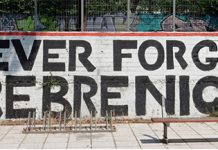
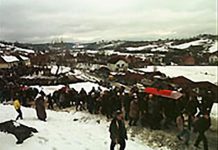
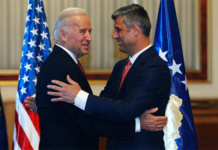
A sad story
https://srebrenica.org.uk/
Some background information I disseminated in a March, 2000 email:
Banquet Address by U.S. Ambassador to Yugoslavia, John D. Scanlan July 22, 1990
[John D. Scanlan served as US Ambassador to Yugoslavia in the late 1980s. His address (below) is excerpted from Alex N. Dragnich, Serbia’s Historical Heritage, (Boulder: East European Monographs, 1994) 111-117. Scanlan’s address was delivered in 1990, four years prior to the publication of this book. Beginning of excerpt:]
——————————————————————-
Tonight, I would like to address the problem of the bad public image that
Yugoslavia in general, and Serbia in particular, now tends to receive in the
American Media. The typical story on Yugoslavia these days tends to have a theme
that I would characterize as: good Slovene–bad Serb–poor Albanian. The most
agregious recent example of this is the story on Yugoslavia which appeared in the
August issue of National Geographic. The author of the article takes at face value,
and quotes, anti-Serb comments of Albanians, Slovenes, Macedonians, and Croations,
most of whom are not particularly authoritative but represent man-on-the-street
opinions. He does not balance these by comments of Serbs except in one instance
where he quotes the angry reaction of an Old Serbian friend of his about
seccesionist sentiments the author heard in Slovenia. The author clearly seems to
identify much more comfortably with Slovenes, Croatians, Macedonians, and Albanians
than with Serbs. About the only nod to Serbian history is the author’s appreciation
of the emotions Kosovo stirs in Serbs because of the battle of Kosovo Polje in 1389
and the subsequent centuries of occupaton of Serbia by the Turks.
The sad part about this particular article is that the author obviously knows
something about Yugoslavia but not enough to put events into proper perspective,
and, given the large and influential role of the National Geographic, he is
misleading literally millions of Americans.
American ignorance of Yugoslavian history, culture, and geography is by and
large broad and general. And why not, it is a very complicated story. Most
Americans do not know that Slovenes, Croatians, Serbs, Montenegrins, and Macedonians
are all Slavic peoples with similiar languages. Most Americans do not know that
there are almost as many Albanians living in Yugoslavia as in Albania and that 90
percent of the Albanians in Yugoslavia are Moslems who are able to practice their
religion freely in Yugoslavia, but not in Albania. Most Americans do not know that
the Albanians in Yugoslavia enjoy the same civil and human rights as all other
Yugoslavs and have infinitely more freedom in Yugoslavia than the Albanians in
Albania, the last Stalinist state in Europe. Most Americans do not know that
Albanian is a legal language in the Kosovo and that all Albanian children in the
Kosovo attend Albanian language schools all the way through university, and Pristina
is one of the largest universities in Europe in terms of numbers of students. Most
Americans do not know that the largest and most modern library and repository of
Albanian literature and culture is in Yugoslavia, in the city of Pristina, not in
Albania, and that that library is one of the largest and finest libraries in
Yugoslavia. Most Americans do not know that Serbia is the only republic of
Yugoslavia that had two autonomous regions carved out of it by the Yugoslav
constitution of 1974, when there was just as much justification for carving out of
Croatia an Autonomous Region of Lika to recognize the more than half million Serbs
living there or an Autonomous Region of Istria to recognize the large Italian
minority living there. I could go on endlessly about what most Americans do not
know, but should know, before they make judgemental statements about relations
between the ethnic groups that make up Yugoslavia.
I do not mean to suggest that there have not been human rights abuses in
Yugoslavia. There have been many well documented cases of human rights abuses of
Yugoslavs by one ethnic group by Yugoslavs of another ethnic groups or, more
commonly, by Yugoslav officials, and since we have made human rights a strong and
conscious element of our foreign policy, we should not hesitate to condemn human
rights violation whenever and wherever we find them. But we should be totally
objective in doing so and, in a powder ked of ethnic divisiveness such as Yugoslavia
represent today, we should be extremely cautious to avoid the appearance of tilting
for or against any ethnic group, particularly when emotions are as high as they are
today in Kosovo. As a government, I think we have done so and I wish at this point
to read to you the official statement of the Department of State issued on June 29,
1990.
“We are deeply concerned about rising tensions in the province of Kosovo, in the
Yugoslav Republic of Serbia. Rooted in a long history, the conflict between ethnic
groups living in the area threatens the well-being of all the people of Kosovo,
Serbia, and Yugoslavia.
“We believe this conflict can only be resolved through peaceful, democratic
dialogue and respect for the dignity and human rights of alll citzens of the
province. It cannot be solved by violence, intimidation, or the threat or use of
force by any party. We call upon the people and the government of Serbia to respect
and protect the rights of all Albanians living in the Republic of Serbia, especially
Kosovo. By the same token, we call upon the Albanian population in Kosovo to
respect and protect the rights of all resident Serbs and Montenegrins and others.
“It is for the people of Yugoslavia alone to decide under what constitutional
arrangements they wish to live. The United States continues to support the unity,
independence, and territorial integrity of Yugoslavia. We hope that the people of
Yugoslavia, of all national and ethnic groups, will live together on the basis of
mutual respect, democratic pluralism, and the principles enshrined in the Helsinki
Final Act and CSCE process. It is incumbent on the ethnic majority of each republic
and province to guarantee the security and fundamental human right of all national
and ethnic minorities living within the territory.
“Since World War II Yugoslavia has, on the whole, provided a commendable example
of national, cultural, and ethnic harmony in a multinational state. We hope
Yugoslavia can continue this proud tradition.”
If the position of our government is clear, balanced, and objective, then why is
the media coverage of events in Yugoslavia seemingly so prejudiced in favor of some
and against others? I would have to say that I believe Yugoslavia in general, and
Serbia in particular, have not been particularly adept in public relations. That is
one reason. I think another reason is that we have forgotten that Yugoslavia has
been independent of the Soviet Union since 1948 and has pursued its own national
brand of communisim, and that it is, in fact, very different from the former Warsaw
Pact client states of the Soviet Union who now have liberated themselves to one
degree or another. Yugoslavia liberated itself from the Soviet Union but not from
communism under much more difficult circumstances in 1948. And we were wise enough
to come to Yugoslavia’s aid quickly and substantially, seeing it as in our own
national interest to promote fissures in the Soviet bloc. Yugoslavia is now
handicapped by the fact that its communist party, having successfully portrayed
itself at home and abroad as indigenous and independent from more than 40 years,
enjoys more credibility and domestic support than the Soviet installed and directed
East European parties. The latter all crumbled rapidly during 1989, while the
Yugoslav party, which has its own firmly entrenched domestic base, has displayed
more staying power. This prompts many foreign observers to conclude, incorrectly in
my view, that Yugoslavia is less interested in political and economic reform than
the Warsaw Pact European countries. This is, of course, not at all true. In a
sense, Yugoslavia invented perestroika and glasnost and since Tito’s death in 1980
has been seeking in fits and starts to reform its political and economic systems.
The process has moved more slowly than we would have hoped, to the extent that most
Americans are prepared to believe that Yugoslavia has not yet liberated itself as
Warsaw Pact countries have. Indeed, I have been asked by people who should have
know better, “When is Yugoslavia going to follow the pattern of Hungary, Poland, and
other East European countries?
The only truly objective detailed and insightful account of the current
situation in Yugoslavia which I have read recently was a series of two articles in
the New York Review of Books written by Michael Scammell, who is a professor of
Russian Literature at Cornell University. Scammell does a brilliant job of
presenting the nationalistic and political ferment together with detailed historical
background republic by republic, from north to south. He points out that since the
end of World War II, Serbs were the leaders in democratic thought and movements
until the last two or three years when the Slovenes moved to the fore, followed
belatedly by the Croatians. Scammel’s view is that while the democratic opposition
remained just as strong in Serbia as in Slovenia, the dispute over Kosovo permitted
the Serbian communist party to seize the initiative by directing nationalistic
sentiments against the Albanians. The Serbian dissidents were thus upstaged and
outflanked by Milosevic, who exploited the issue in order to strengthen the party at
the expense of the opposition. But Scammell goes on to quote Yugoslavia’s most
famous longstanding dissident Milovan Djilas as having told Scammell that he too
first approved of Milosevic because he Milosevic had smashed the old Titoist myths
of brotherhood and unity that were holding Yugoslavia back. He had liberated the
consciousness of the Serbian people and was quite right to make Kosovo and Vodvodina
subservient to Belgrade, even though it meant sending in troops. Scammell than
quotes Kosta Cavoski as having told him that Milosevic is righting a national
wrong. Cavoski said that communists everywhere, and especially Yugoslavian
communists, have exploited national questions for their own ends and have crushed
national interests. The Serbs suffered under this policy more than other people in
Yugoslavia. While Djilas and Cavoski told Scammell that they believed Milosevic’s
style is authoritarian and his tactics unduly rough, they did not consider him to be
a neo-Stanlinist or neo-fascist. Djilas said no arrests of dissenters are being
made in Serbia itself, and although Milosevic controls 90 percent of the press, the
press is more outspoken than it was. The intellectual atmosphere in Serbia is freer
than it has ever been. Philosophers, sociologists, and writers are freer now than
they were even before the war.
The objective, extremely well-informed observer, Scammell, is optimistic that
Yugoslavia will survive. As he puts it, “It seems inevitable that the federal basis
of Yugoslavia will be reexamined and renegotiated in some form or other.” I will
cast my lot with Scammell. I personally believe that recentralization is out of the
question. But I am confident that a more viable form of federation or confederation
will be worked out for the simple reason that at the end of the day, Yugoslav
leaders north and south will recognize that going it alone is not a very good option
for any of them economically or politically. The complexities of sorting out the
ethnic mixtures, dividing up the commom property, and the prospect of facing the
world as individual, much smaller political entities will chill secessionsist fervor
when the decision time comes.
Scammell’s article is by far the more profound and his predictions for the
future is based on solid scholarship, but unfortunately, the New York Review of
Books has a very small readership compared to the National Geographic. And our
daily press and the television sound bytes also tend to report and exaggerate bad
news from Yugoslavia.
On the economic front there is a lot of good news, but our daily press by and
large ignores it. Yugoslavia is the only East European country that is currently
significantly reducing its foreign debt. The debt had been reduced from $20 billion
four years ago to $16 billion now, with the expectation of another 2-3 billion
reduction by the end of the year. Inflation has been stopped and reduced from a
rate of almost 2000 percent last December to 31 percent this year to date and is
currently at a stable rate of 0 percent. Foreign currency reserves are sharply up
to a level of approximately $7 billion. And the process of market oriented
privatiztion is proceeding far more rapidly in Yugoslavia than in other East
European countries. There has been a very positive development of new democratic,
independent labor unions throughout the country. And so on. But you don’t read
about these events in the daily press.
While we surely have every right to criticize the lack of media objectivity with
regard to Yugoslavia, and the Serbs, I personally think we must also recognize that
the burning issue for the future of Yugoslavia and Serbia is a viable solution to
the Kosovo problem. I don’t pretend to have any special wisdom on the subject. But
I don’t think the 1974 constitution was the answer. And I think the citizens of the
northern republics of Yugoslavia should acknowledge that in the mid-1980’s they
ignored the anguished pleas of thousands of Serbs and Montengrins in the Kosovo for
attention to their concerns about their personal well-being and security. And I am
convinced that there must be an open and genuine dialogue in and about the Kososo
between Serbs and Albanians in order for a viable solution to be found.
I have visited the Kosovo on many occasions, as early as 1955 as as recently ast
late 1988. I have met repeatedly with Albanian and Serbian leaders there, including
several who are currently actively engaged, and I believe that with the proper
encouragement and support from every corner of Yugoslavia and from Yugoslavia’s
foreign friends, a solution can be found. But this process will never get off the
ground if one party to the dispute is repeatedly, incorrectly, and unfairly held to
be solely at fault. The modern Kosovo problem as been created by all Yugoslavs.
Let them join together, with malice towards none and charity toward all, to solve
the problem. It is in their common interest, and in ours, that they do so.
[End of Scanlan’s address]
————————————————————————————————————-
—Comments from Alex Dragnich’s introduction
“Yugoslavia entered stormy waters before Tito’s death in 1980. For the Serbs,
the smoldering issue was how he had scattered them so that a third of them were left
to live in other republics, mainly Croatia and Bosnia-Herzegovina. In some ways the
most burning issue was Kosovo, which although part of the Republic of Serbia, was
given autonomy so as to placate the Albanian majority. The Kosovo Albanians, with a
token of Serbs, ruled Kosovo through the local Communist Party, part and parcel of
the Yugoslav Communist Party. Increasingly, they abused the autonomy given them by
persecuting the Serbs, so that from being nearly one-half of the population in 1946,
the Serbs were reduced to about 15 percent in the 1980s.
“By and large, the West exhibited no sympathy for Serbian grievances concerning
Kosovo or elsewhere. For example, at the time of the commemoration in Kosovo in
1989, mentioned above, Western diplomatic representatives boycotted the event,
allegedly on the initiative of American Ambassador Warren Zimmermann. This act was
calculated to show displeasure toward the Serbian president, Slobodan Milosevic, who
was being accused of fomenting trouble in Kosovo by severely limiting Kosovo’s
autonomy.
“The West did no care to recognize that the root of the trouble were the various
Kosovo Albanian persecutions of the Serbs so as to achieve an “ethnically clean”
Kosovo. And Milosevic was not the first to seek to deal with them. Before he
became head of the Serbian Communist Party, other Communist rulers of Yugoslavia and
Serbia were totally ineffective in seeking to to cope with the Kosovo Albanian
violations of human rights of Serbs. In the mid-1980s, the Bar Association of
Serbia addressed letters to Serbian and Yugoslav authorities, detailing the
violations of the constitutional and legal rights of Serbs in Kosovo. The president
of the Bar Association said that these acts of the Kosovo Albanians reminded him of
the “dark days of the occupation when fascism rule over the expanse of our country.”
“The Yugoslav Communist party issued a number of declarations that “pressure on
the Serbs and Montenegrins must be stopped,” that such acts cannot be tolerated in
“a legal state,” and that they constituted genocide. And all of this was before
Milosevic came to head the Serbian Party. Milosevic putting limits on Kosovo’s
autonomy, even in the opinion of Serb anti-Communists, was to some extent a seeking
to make amends fo the basically anti-Serb policy that the Yugoslav Party had
followed in the past. The failure of the West to see this, in the widely shared
opinion of nearly all Serbs, was clear evidence that the praises showered on them in
the past were shallow and even disingenuous.
“Consequently, after Yugoslavia began disintergrating, the Serbs could see that
the actions of the West signified that the “love” in the love-hate relationship went
into discard. Neither influential leaders (or indeed those in opposition) nor
anyone in them majority media instruments ever attempted to put forth information or
analyses that would result in an understanding of the position of the Serbs. Serbia
and the Serbs were treated, for some unknown reason, as if they had no right to
defend vital national interests. Serbs have asked why were Tito’s internal
boundaries, which struck at the heart of Serbian’s national interests, so sacred to
the West that they had to be maintained at such horrendous costs? Some day, perhaps
historians will shed light on such incongruous behavior by leaders of countries in
the West that at times in the past acknowledged that they owed so much to their
valiant allies, the Serbs.”
Much to remember:
https://humanrights.ca/story/remembering-srebrenica-genocide